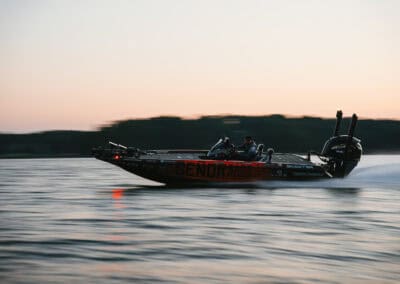Your cart is empty
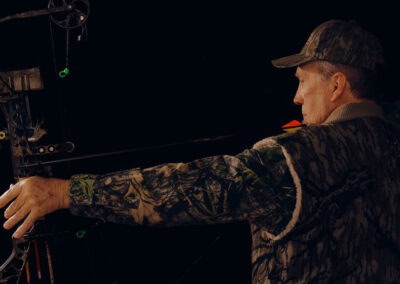
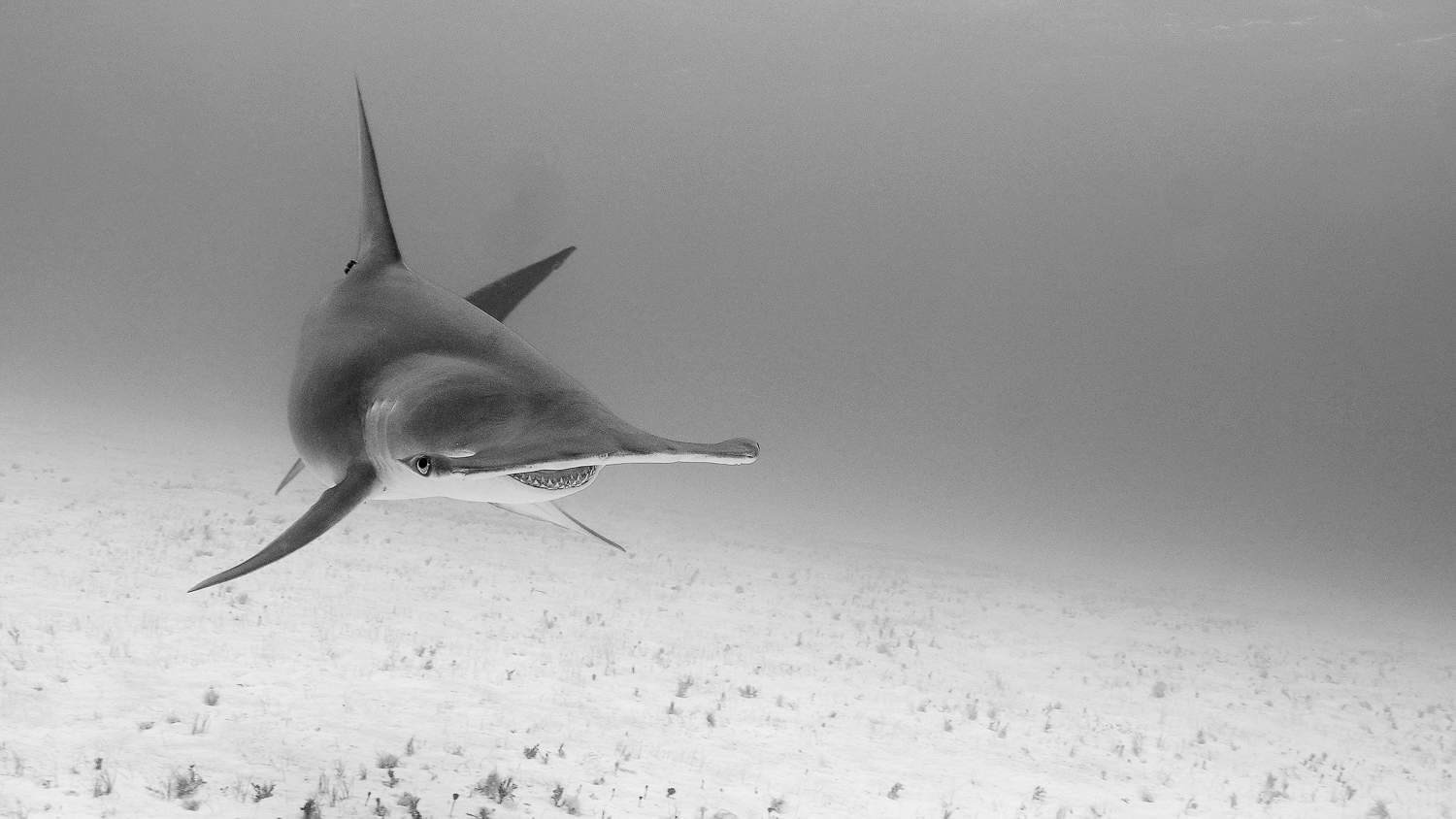
Interview
Photos
Byron Pace
Read Time
27 minutes
Posted
For many species of sharks around the world, the future is bleak, with the global abundance of sharks declining by over 71% in the last 50 years.
My story begins in Cornwall. Every year throughout my childhood, when the days lengthened and the temperatures became moderately more pleasant, I would find myself wading through the tidal caves of Cornwall, clambering over the pitch-black outcrops and rummaging through the seaweed-lined rock pools. Woven between the quaint rows of pastel-coloured seaside cottages, cobbled streets carried a hustle of people from pubs to pasty shops, all inevitably twisting their way back to the same beating heart: the harbour.
Every year throughout my childhood, when the days lengthened and the temperatures became moderately more pleasant, I would find myself wading through the tidal caves of Cornwall, clambering over the pitch-black outcrops and rummaging through the seaweed-lined rock pools. Woven between the quaint rows of pastel-coloured seaside cottages, cobbled streets carried a hustle of people from pubs to pasty shops, all inevitably twisting their way back to the same beating heart: the harbour.
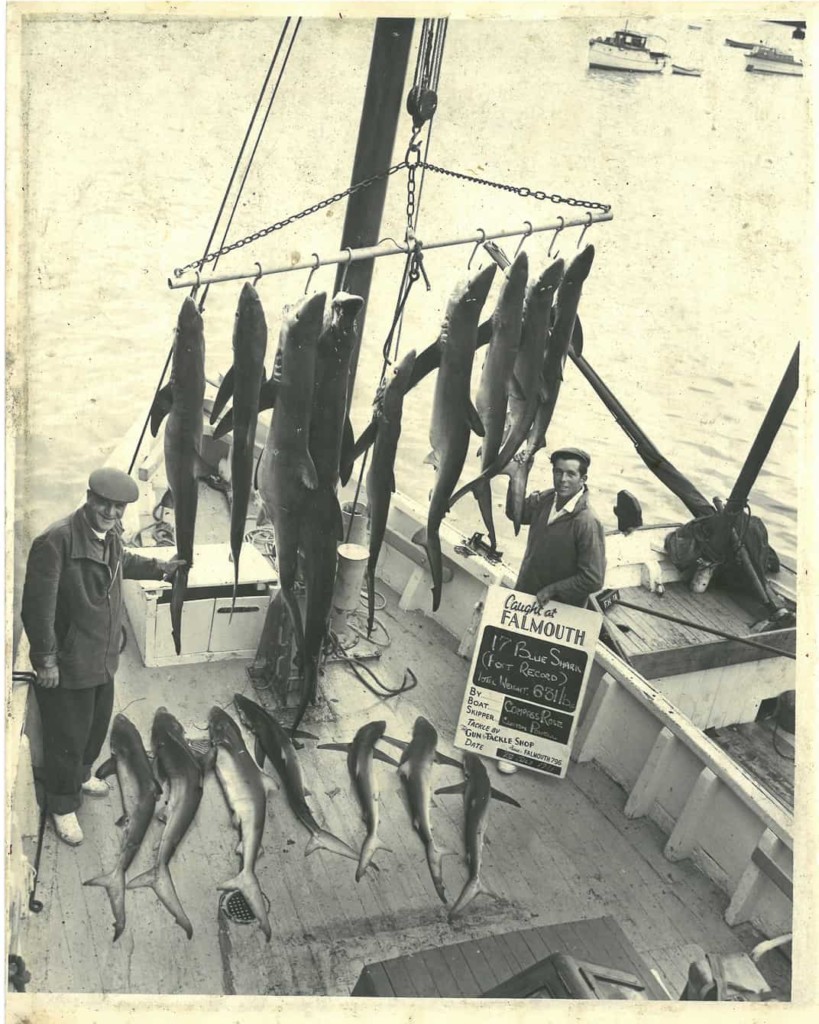
Packed between the resilient sea walls were the powerful aromas of freshly raised crab pots and the sounds of bustling tourists, crooning herring gulls and rolling waves. As the tide retreated, it left colorful, rickety wooden boats scattered on the golden sand. Each vessel had its own story to tell. The casual observer would be oblivious of the rich game fishing history once heralded here. While the public displays of 100-plus-pound sharks may be an age gone by, they still traverse and hunt these waters.
For centuries, bountiful supplies of schooling fish, including mackerel, sardines and herring, have been intercepted whilst migrating through Cornish waters. Where prey fish are found, predators will follow, and this quaint, picturesque county became home to the first big-game fishery in Europe. By the 1950s, records show that in the harbour town of Looe, up to 6,000 blue, mako, porbeagle and thresher sharks were landed every year. Long before the consequences of mass predator removals from an ecosystem were fully understood, the prize-winning anglers, both men and women, were heralded as heroes — conquerors of the great oceans taming mighty beasts of the dark. This vibrant recreational kill-fishery, combined with mortality from commercial overfishing and bycatch, compounded the mounting threats posed by climate change — warming oceans, acidification and habitat destruction.
For many species of sharks around the world, the future is bleak, with the global abundance of sharks declining by over 71% in the last 50 years. The International Union for the Conservation of Nature (IUCN) classifies the UK’s four largest shark species, ranging from “near threatened” in the case of the blue sharks to “critically endangered” for porbeagles in these waters. As such, policymakers have added international prohibitions or total allowable catch limits to reduce catch-and-kill commercial fishing and protect the remaining British shark populations. However, the Cornish tradition of recreational shark angling lives on, quietly and far from the public gaze.
My early fascination with the ocean escalated as I got older, sculpted by my home waters, the Celtic Sea. This pull would eventually lead me through a degree in biological sciences and onto shark research in the Caribbean. For all the time I had spent along the coastline in the UK, it was only much later that I discovered that these magnificent, formidable predators of the sea could be found in the swirling waters of my childhood. But what I couldn’t have been prepared for were the political wranglings of the shark conservation world and the tangled divisiveness I would find myself reporting on as an eco-journalist in the UK. However, the foundations for this began on the shores of Florida.
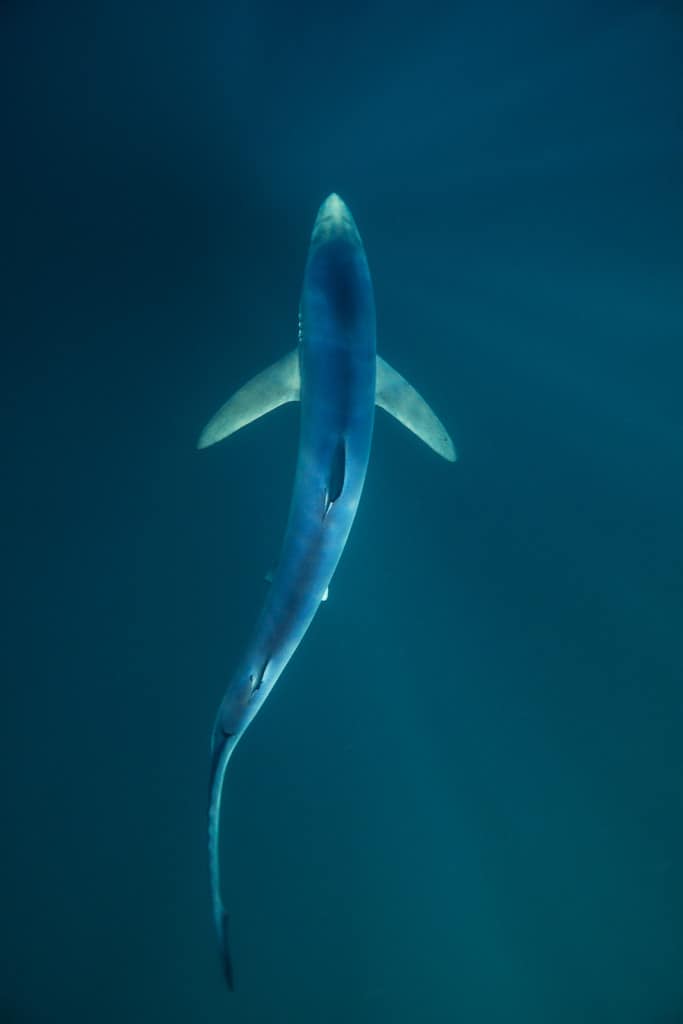
On American Shores
In the cold glow of a 3 a.m. moon, I crouched under a foil blanket, shivering profusely as I stared intently at the ocean. Between the moments orchestrated by ocean sounds, I chatted shit with the group of blokes I was with, some dressed in camo, others more inconspicuously in hoodies and jeans. All had a singular focus: their resting, poised fishing rods, tips gently bobbing under line tension. There would be many more nights of this before I would cast my eyes over the infamous creatures we were searching for.
I had been drawn to this beach via an old friend. Hannah Medd, Founder of the American Shark Conservancy ((ASC)), was unlike anyone else I knew at the time, voluntarily placing her organization directly in the middle of a rather heated feud. After several sizeable shark specimens had washed up dead on local beaches — some with evidence of hooks and lines attached — there had been an outcry to ban what was, and still is, the legal recreational sport of shore-based, catch-and-release fishing for the great hammerhead shark. But, where others saw drama, Hannah and the ASC saw an opportunity.
Every winter, hammerheads, along with tiger and bull species, appear close to the shores of Florida as they prey on the thousands of migratory blacktip sharks. Loaded with hefty chunks of bait, sometimes the wings of rays or filets of a bull shark already landed, anglers kayak into the darkness and set their lines out past the breaking waves — not a sport for the faint-hearted, nor is it recommended for the novice with light tackle.
Great hammerheads are renowned for their fighting power, for their ability to turn on a dime and reach speeds of up to 25 mph. As obligate ram ventilators — like the great white — they must keep swimming or find a strong current to linger in order to breathe. This likely contributes to recorded deaths when caught in longlines, and those specimens lost when captured for scientific studies (yes, scientists also fish, and this sometimes leads to accidental mortality).
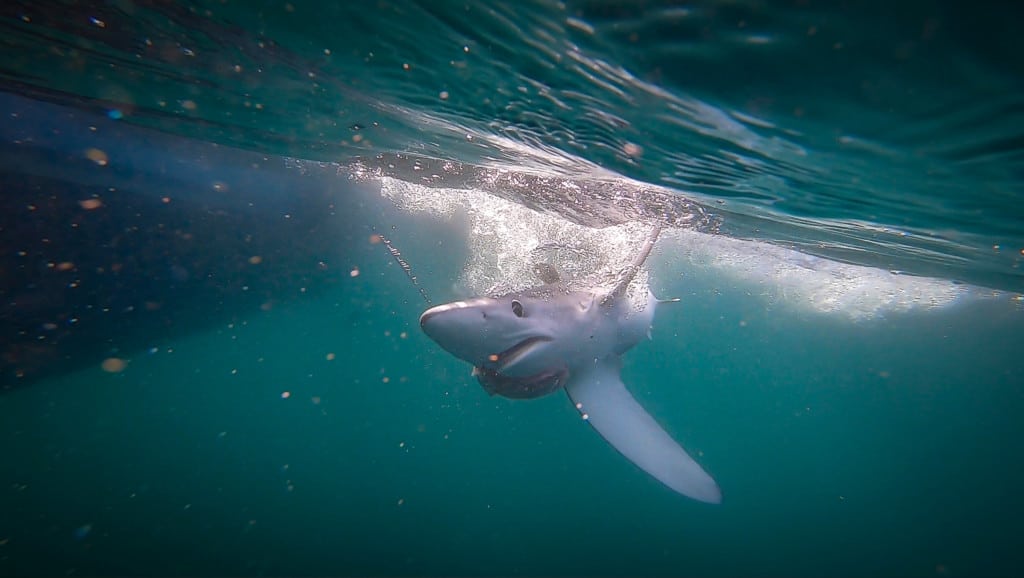
Despite biological background knowledge on the sharks, and many fervent, opposing opinions as to the sustainability of the sport, limited research existed as to the mortality rate of catch-and-release — an important, if not critical question for making appropriate management decisions. The American Shark Conservancy was the first independent group, partially funded by the Save our Seas Foundation, to build a working relationship with anglers. The data they collected began the journey of answering some of these questions. This study, and others that have followed, helped inform recommendations to policymakers and improve the sustainability of shark angling from within the community. Given that shore-based shark fishing participation is on the rise in Florida, this partnership between anglers and scientists has become increasingly important.
Since this study commenced in 2018, Florida Fish and Wildlife has implemented a permit system, now requiring all shore-based shark anglers in Florida to complete a free online training course before being issued. Sign-up numbers have revealed a community of anglers far greater than the ASC had expected, with over 14,000 applicants.
“Recreational fishermen are often seen as the little guys in small boats not making much of an impact, but in some places, this impact may be even higher than commercial fishing,” Hannah informed me.
Perhaps the most staggering admission is that whilst great hammerheads are included as part of a fishing quota, comprehensive population data on which to base this has been absent until now. In collaboration with anglers, ASC has since contributed some of the only recreational data on great hammerheads in Florida. Furthermore, with the ongoing support and trust of anglers, Hannah’s team have acquired extra data through more extensive surveying, which can now be used to inform conservation action within this fishery.
Despite the ASC receiving initial backlash from some members of the broader science and diving community for working with anglers, Hannah insists that shark anglers can add to the growing scientific knowledge base and has no plans to stop working with them anytime soon.
“As long as this is a legal activity, we should be working with them to get data. For the same reason we work with divers too, fishermen are the ones out there. As scientists, we have limited time to spend on the water, and our team would never be able to replicate what they are doing. Without data, we can’t know if this sport is having an effect or how to mitigate this if it is. That is the role of the ASC — to get the science.”
To better protect shark species around the world, we need to understand population movements and trends, and have a system that can monitor these changes for potential areas of concern. It seems that certainly for now, the anglers could be an ideal ally for shark scientists, championing wider shark conservation — even if only for selfish reasons, they don’t want their “sport” to disappear. As Hannah astutely pointed out to me, “Banning a sport just because you don’t like it means you have lost all potential benefits.”
Controversy in the UK
As I sat in my office nursing a lukewarm cup of tea in May 2019, almost one year after returning from Florida, I received a phone call. A man’s voice on the other side of the phone suggested a characterful, passionate individual; Ian King was the President of the Shark Angling Club of Great Britain ((SACGB)), which, as it turned out, was based in Cornwall. Ian had called in response to an online query I had made, attempting to source a shark tag for use in a school workshop demonstration. He was only too happy to help, furnishing me with a handful of unused M-type dart tags — small, externally fitted tags containing written details and contact information should a shark be recaptured at any point during its life.
Ian had an enviable knowledge of sharks gleaned from his decades of recreational shark angling. However, he had concerns about the future of the club. Was shark fishing in the UK soon to be confined to record books? There seemed to be a recent push in that direction. With the experience gained in Florida freshly in my mind, I wanted to understand the recreational shark fishery here at home.
Over a year of loose conversations and a pandemic had passed before I boarded a small fishing vessel in the prosperous harbour of Looe. The sun had yet to breach the horizon, and in contrast to the sense of excitement exuding from the crew, the turquoise Celtic Sea stretched out calmly before us. Admittedly, I felt it too. Quickly I was swept up in their tirades of banter, and for the day at least, I was a shark angler.
It’s a commonly stated fact that we have over 40 different species of sharks swimming off the UK coastline, but having seen very little published on the subject, I had lived under the naïve understanding that the larger predatory species of these groups were so infrequently encountered that they were almost in the category of myth and legend. I was wrong.
After an hour-long voyage, pit-stopping briefly to catch baitfish, the skipper informed us that we had reached our destination. A round of teas had barely passed between us when one of the enormous reels let out a hellish screech and the artful dance of lifting and winding was underway. With unfettered elation, the group all pitched in to help, eventually boarding a sizeable female blue shark. Its length and sex, along with a photo, were taken all in under a minute before an M-type dart tag was inserted. Hook removed, the iridescent flanks of shimmering indigo slipped out of sight and back into the abyss.
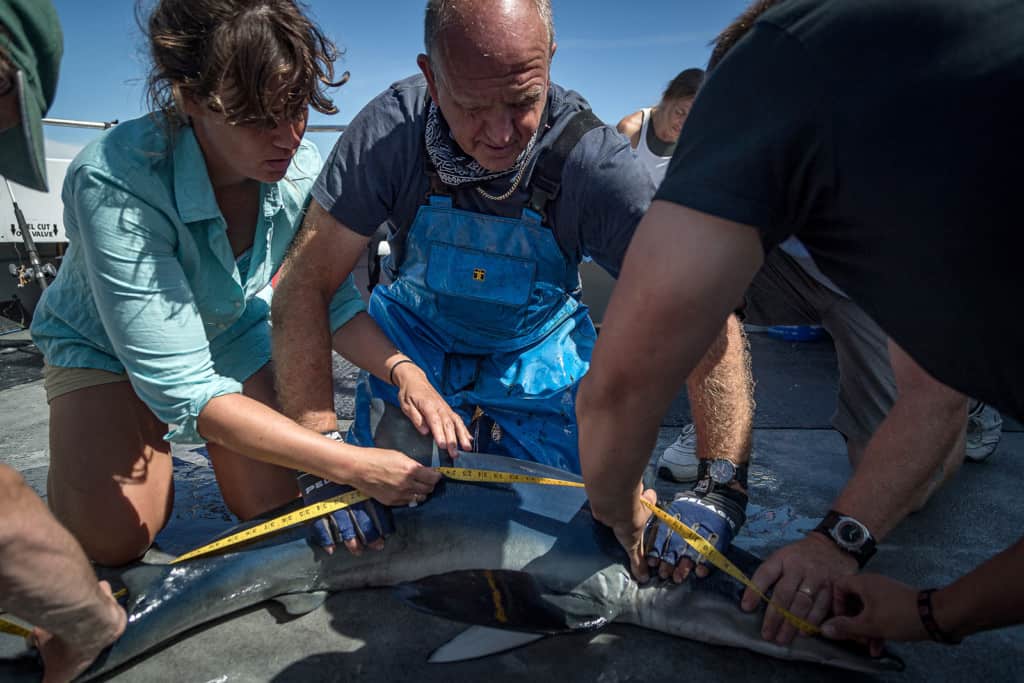
After the motions were repeated, tagging a further two sharks, a familiarity swept over me. Overlooking the cooler air and modestly older company, this felt much like the fieldwork I’d been a part of at the shark lab in Bimini. The notable difference was the lack of acoustic transmitter deployment, sat tags, accelerometers or any other technology that could provide further, more accurate data about the shark’s ecology. On this one summer day, the crew caught and released a total of 27 sharks, some over 70 inches in length. A new record for the boys on board, and this trip was just for blue sharks.
As it turned out, many similar recreational shark angling operations exist all around the UK, with many targeting larger shark and ray species, including six gills, porbeagle, threshers and (though much less commonly caught) mako sharks. I couldn’t help but ponder the potential pool of inside knowledge and experience that these anglers might have stockpiled throughout the generations. While shark scientists around the world are still trying to theorize about some of these incredibly elusive, highly migratory open ocean species, these anglers may have amassed decades of information on their feeding preferences and movement patterns, how to catch them, and in turn, the state of the wider ecosystem. How, having traveled the world avidly chasing sharks, had a resource on my own doorstep evaded me until now? The answer is simple: fear. With sharks now heralded as one of the ocean’s great charismatic megafauna — rebuilding their public image after the film Jaws — anglers, much like hunters, can feel the weight of public disapproval of their sport.
When January 2022 rolled around, I was contacted by several concerned anglers from the SACGB, who informed me that an upcoming Joint Nature Conservation Committee ((JNCC)) decision, advising directly to the government, presented a grave threat to the future of shark angling.
Increasing pressure from shark conservation groups in the UK had initiated a post-release mortality study through Exeter University in collaboration with the anglers — although admittedly at the considerable hesitation of some, who feared outside involvement would end selected shark fishing in the UK. However, before any results had been released, a bid to close the North-East Atlantic porbeagle catch-and-release fishery was already underway; a submission had been made to the JNCC to list the porbeagle under Schedule 5 of the Wildlife and Countryside Act. If passed, this would see porbeagles “protected from intentional disturbances” and would put a stop to anglers targeting this species.
At first glance, the situation seemed rash. What could have sparked this push to close the fishery now? Was this a decision led by science or emotion? And how might this affect the future of shark conservation? Keen to find out how the relationship between science, policy and angling might evolve next in the UK, I sought some clarity about the drivers and implications. First off, I arranged to join a local porbeagle fishing operator to interview the skipper. Though it wasn’t common knowledge in the science world, over the last few years I had heard anecdotal evidence from anglers that the Celtic Sea may be home to a porbeagle nursery. Historic angling data suggested that pregnant females were regularly caught at certain times of the year, followed by a bycatch of young, potentially neonate pups in later months. So little is known about this large migratory species that this would present a critical untapped resource from a scientific perspective.
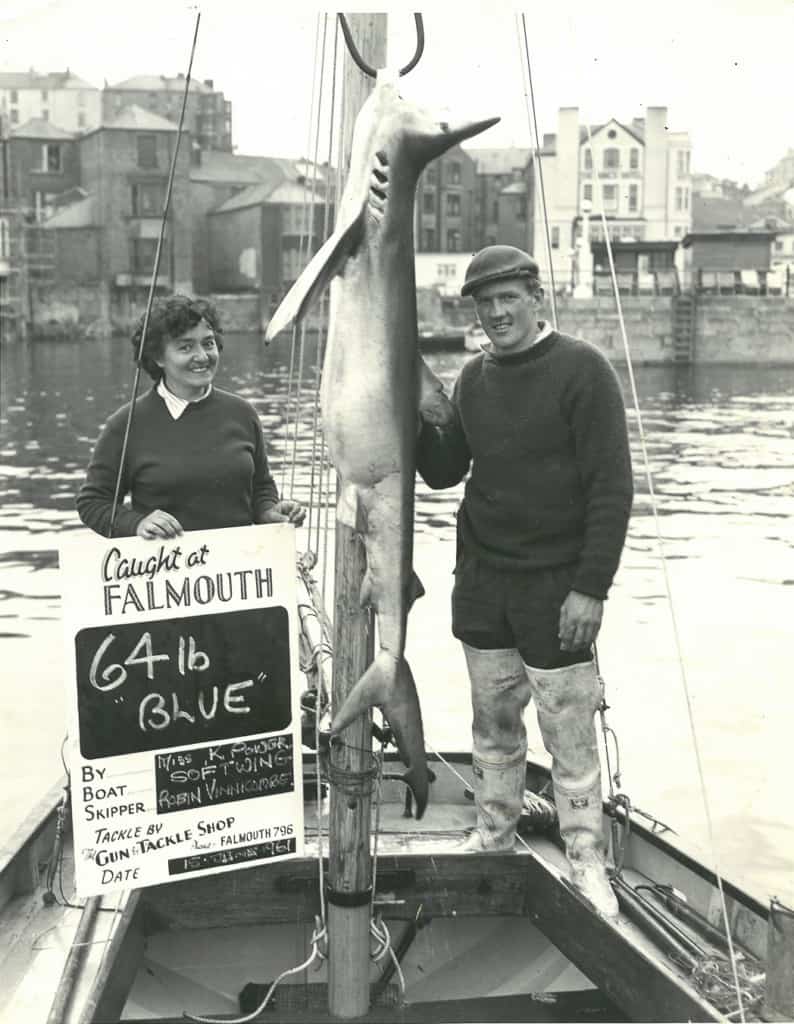
The irony is hard to digest. By anglers entrusting decades of knowledge to scientists, it could be, and possibly has been, harnessed against them to close the recreational fishery. However, the porbeagle skippers whom I’d spoken to, both now and in previous years, had always remained open to the idea of collaboration with scientists.
Anglers in the UK have already adapted to many changes in their sport since its conception, shifting from the catch-and-kill fishery of yesteryear to the catch-and-release methods of today. In the last couple of years since my trip with them, the best-handling practices of SACGB have evolved to recommend against removing sharks from the water — unless absolutely necessary. This reduces stress, limiting mortality risks. If operators comply with this recommendation, it will put an end to the classic trophy photo — cradling a shark in one’s arms — which some paying customers desire most. It’s worth noting though, that not all shark anglers are a part of the SACGB and these recommendations are not easily governed. Further, UK records are still kept by line class, arguably encouraging anglers to target sharks with lighter tackle. By the admission of many anglers around the world, whether in saltwater or freshwater, this archaic endeavour has no place in modern angling, simply increasing the welfare risk for the sake of the human ego. Ongoing mortality studies by the American Shark Conservancy have identified the use of light tackle, resulting in longer fight times, as one driver of increased mortality risk, and as such they should be discouraged.
One person very well acquainted with controversy and change is author and recreational shark angler Ian Harbage, a self-proclaimed “anorak” of the sport who, since the age of six, has taken it upon himself to seek out, compile and document the intricate details behind every mako shark capture in the UK. Ian’s fascination with sharks is unquestionably infectious, and his respect for these species, despite any preconceptions one might have of his hobby, is evident through his work.
“The thing that really prompted me to write this book,” Ian explains, “is that so many of the people involved in these shark captures have since died. I didn’t want this knowledge to get lost.”
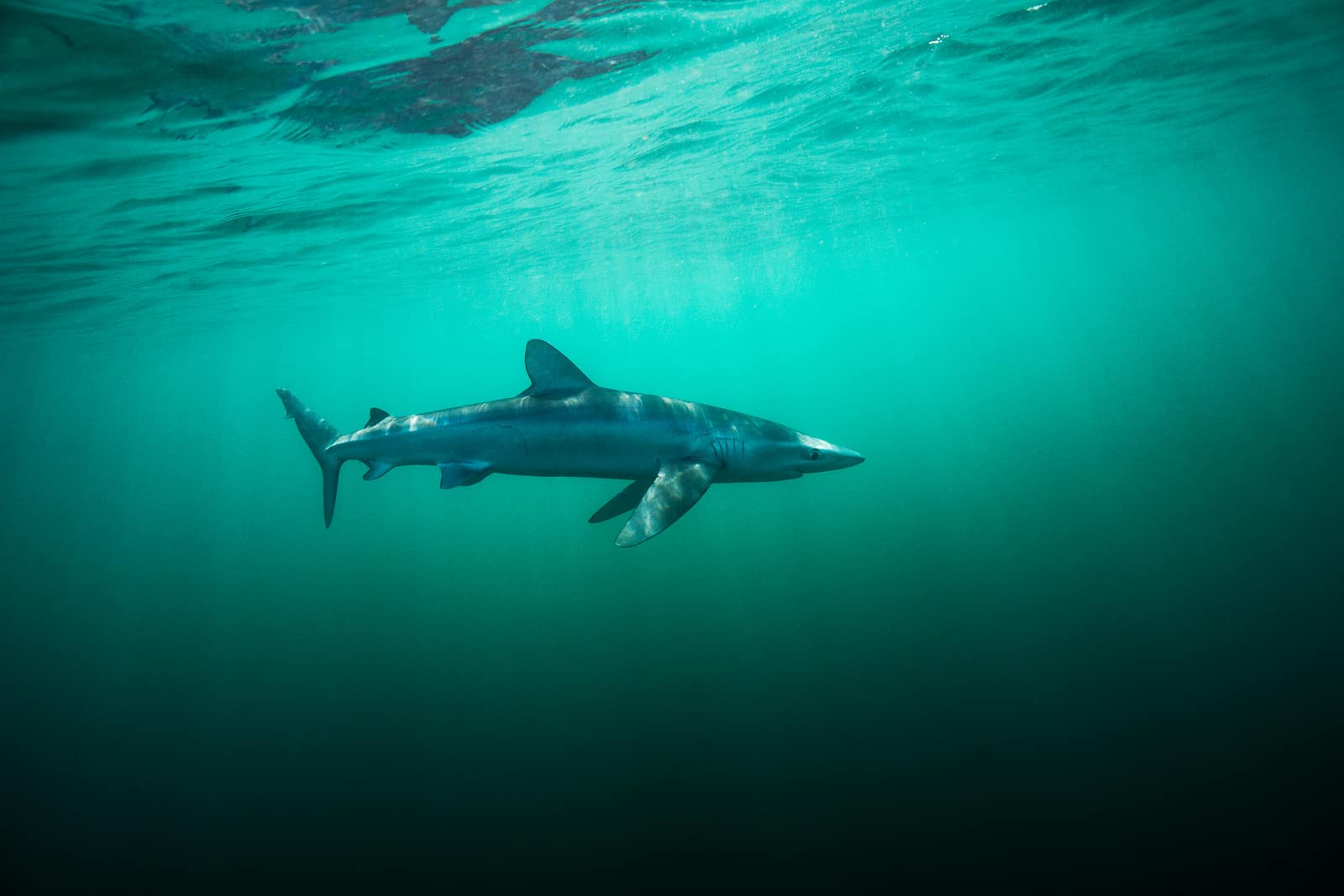
In search of details surrounding one historic capture, Ian tells of how he was informed by the wife of the angler in question, Tony Rednapp, that he was on his deathbed and unable to take a phone call. Having apologized profusely for disturbing them during such sad circumstances, Ian had left the lead in peace. But that evening, the phone rang, and Tony himself, seemingly invigorated at the prospect of reliving his encounter, gifted Ian the story — a legacy now left for Tony and for the shark.
By collating knowledge, experience, and records in this way, Ian, alongside other groups and skippers, can create and preserve a wealth of data, which is helpful in understanding sharks and their greater ecosystem. Every detail, from location coordinates and catch incidences to shark sizes, sex and dates, has a potential value. If this is compiled and connected with wider historical data, such as weather patterns, water temperatures and other meteorological data kept by the Met office, hypothetically speaking, this could be used to analyze species trends over time and to help predict what the future of the Celtic Sea might look like.
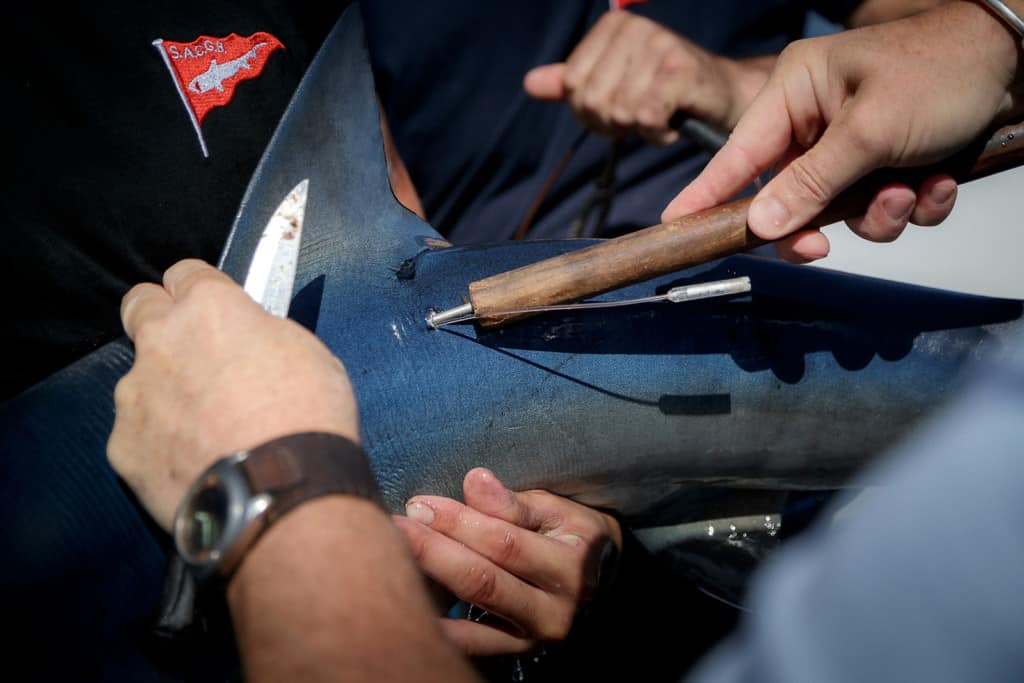
“We feel like we are just on the verge of painting a bigger picture for what these porbeagle sharks are doing in our waters, and it’s only the anglers that can help paint that,” says Ian earnestly as he continues to recount with delight more anecdotes — the return of the bluefin tuna and the sexual dimorphism of the blue sharks merely skimming the surface.
Catch data from Looe alone shows a consistently increasing trend over the last decade, but what does this mean? Are there more sharks in our waters? Is this linked to warming water temperatures and climate change? If recreational shark fishing was having a detrimental impact on these fish, how can numbers be trending up, or is fishing pressure and effort increasing too?
A few days after arranging our porbeagle fishing trip, the controversy and tension I sensed from the angling community around the JNCC application was made tangible. A concerned party — which would turn out to be one individual — had taken it upon themselves to directly contact every angler I had arranged to interview, including committee members of SACGB and the skipper we were due to go out with, all of whom now suddenly refused to be included in this article or provide any further comment. Reasons ranged from being “unsure about the nature of the publication” to fear of influencing the JNCC decision.
Surely, if there was any chance of the latter, months after the official submission had already been made, then they would want to use this opportunity to back up their case? Slightly baffled, I delved deeper.
All roads led to an individual linked to a project known as “The Pat Smith Database” — a compilation of over 70,000 shark capture records from around the UK. The bulk of this consisted of 20,000 archive SACGB data entries, which are open source. This potentially valuable collection could provide critical conservation policy insights for science, while better informing and protecting shark angling in the UK. However, instead it appears to have been hoarded and kept under close guard by self-imposed “gatekeepers of knowledge”, used for internal publications or partial release to approved requests only.
As a collection named after the most celebrated female shark angler in the UK, who caught and killed the British Record porbeagle, the irony is inescapable. There is no official website and very few published papers, and according to information on the SACGB site, they openly promote an ethos of control and dominance with regard to any future angling narratives. Below is a website extract encouraging anglers to submit data, playing heavily on the insecurities of working with scientists, conservation groups and other outside parties:
“We continue to see this as a team project and not something which belongs to any individual. The agreement we have with all data contributors is that we will never share their raw data with anyone without their permission. This is important to us as it leaves the contributors in control of their data and enables us to be independent of any restrictions often associated with working alongside university-linked programmes or similar.”
Ironically, it feels like one person controls database access.
Unperturbed by this roadblock, I reached out for an interview with The Shark Hub, a collective of scientists and anglers whom I had been familiar with when they set up almost a year ago. According to the Angling Trust website, where their information is housed, the group is set up to “advocate the importance of knowledge and data gathered by the recreational angling community,” engage with and make the sport and shark science more accessible” and “generate public education and awareness of UK sharks and the value of recreational shark anglers to shark conservation.” Given that one of their principal scientists is currently in the midst of data collection for a PHD tied directly to this porbeagle fishery in Cornwall and Devon, they seemed like an obvious contributor to this article. When we approached the Shark Hub for an interview, they responded:
Thanks for contacting Shark Hub UK regarding your upcoming article and for your interest in interviewing various team members. We have discussed your offer within the group over the last few days.
After sending in our official responses to the JNCC consultation earlier this year, the Hub decided that it would be best for the fishery for us not to comment further until the JNCC announce their initial recommendation. For this season, this has included us choosing not to pursue fieldwork in contentious areas where pregnant females are supposedly caught, as this was a key driver in the consultation taking place.
We are at a delicate point in the consultations and wider discussions around the role of RSA in data gathering and input into Shark management strategy, and favour a pause in some aspects of our work until we have some greater clarity on a number of topics.
Unfortunately, this has led us to conclude that we are unable to be included in your article, despite understanding how supportive you are of the UK recreational shark angling sector.
We are sorry to not be able to help on this occasion. Do let us know if any similar opportunities come up once the JNCC recommendation has been announced, and hopefully we will be able to contribute to other articles etc at that point.
Best regards, Steve (on behalf of the Shark Hub team)
I couldn’t fully comprehend why data collection would have been halted in an area screaming out for science to inform policy decisions. Is their silence an admission that they agree with a ban? Is their alignment with the fishermen or with the opposing groups? It was impossible to tell, but one of the Hub’s members was the same person who had successfully barred me from undertaking earlier interviews.
Tight Lips Sink Ships
I decided to change tack and turned my attention instead to one of the conservation organizations supporting the JNCC application: the Shark Trust. Ali Hood, Director of Conservation, was approachable and happy to answer my questions, immediately acknowledging that all stakeholders on the water have a part to play in conservation — anglers being no exception.
“Porbeagle was a popular target species both for commercial retention and as a sport fish in recreational fisheries,” Ali explained. “Now listed as Critically Endangered, porbeagle have been protected from commercial fishing for over a decade and listed on numerous International Wildlife Treaties. We hope to secure protection under the Wildlife and Countryside Act to reduce the interaction with porbeagle to a minimum, hastening population recovery and future return to sustainable management.”
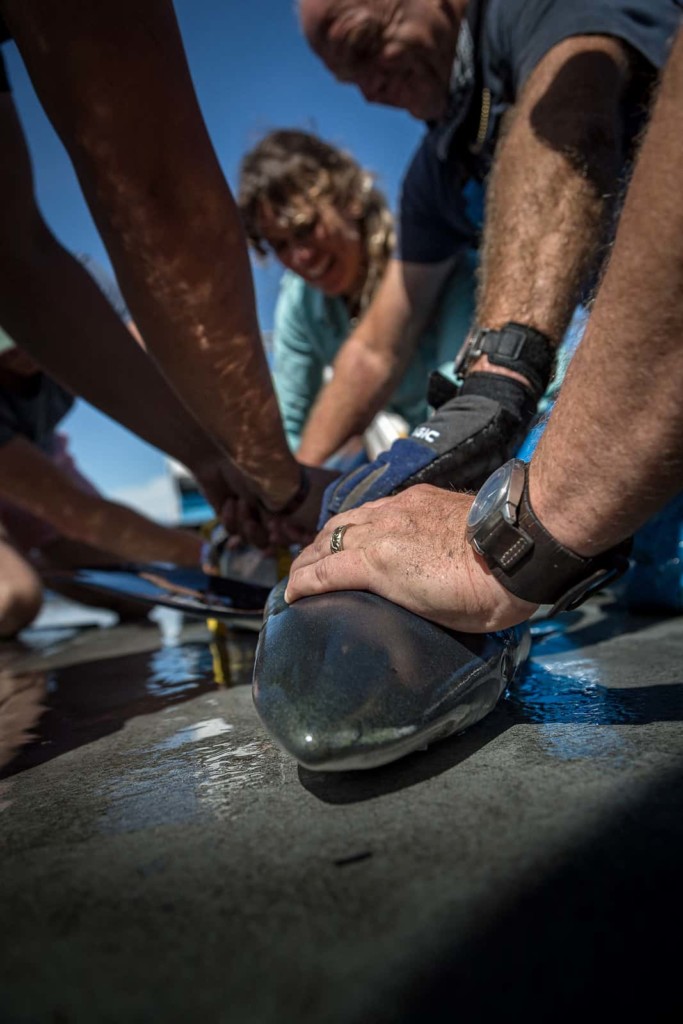
Intuitively, this makes conservation sense. In waiting for more conclusive evidence, we could do more harm — the precautionary principle applies. A ban on recreational shark fishing for porbeagles, aimed to protect pregnant females, might help protect future generations and aid the north Atlantic population to stabilize. Porbeagles take 12- 15 years to mature, giving birth to a low average of four pups in comparison to blue sharks, which mature in half this time and birth up to 135 pups, making them far more resilient as a species.
With this in mind, I reached out to Exeter University scientists behind the aforementioned catch-and-release mortality study. They politely declined an interview in favour of protecting their relationship with anglers but did confirm that “they had only just started tagging porbeagles” and “did not have enough data to draw any conclusions or inform fishery change in any meaningful way.”
There were a lot of unknowns, but all our interviewees agreed that the largest threat to UK shark species is commercial overfishing and potentially climate change — not recreational fishing. Interestingly, the Shark Trust has worked with the SACGB for many years, producing guidance and advising on safe handling. To make this relationship work, this group of anglers has shared their knowledge and put their trust in this outside group. I wondered how much they had been consulted on the current situation? How had it affected their relationship with this advocacy group, and would it enforce their reluctance to engage in future? In my experience, betrayal, miscommunication and broken trust are all too common in the conservation world, as people and organizations compete for a limited pool of funding. This can hinder collaboration and, in turn, slow tangible positive change.
Across the channel, one scientist is working to improve this: Jenny Bortoluzzi is a PhD researcher at the School of Natural Sciences, Trinity University.
“Fishermen are absolutely essential to my work,” said Jenny. ”I think in the past, relationships have been damaged, and now there is a lot of work needed in rebuilding, with sensitivity, these relationships between fishermen, scientists and policymakers.”
Jenny explained how important transparency and inclusion had been in bringing together a cohesive team of scientists and anglers for her research. Shortly after our interview, Jenny and her team were in the field taking blood samples and satellite-tagged what is potentially the largest porbeagle ever recorded off the coast of Donegal — a colossal 2.8m female, estimated to weigh between 400-500 lbs and be between 25-30 years old. She was caught and released with the help of local anglers ((Sid, Terry and Peter)), who were all credited in the online article alongside the team of international scientists on board. The results of this study may help provide more conclusive evidence about the breeding status of sharks and, in turn, better inform policymakers and advocacy groups in decision-making processes; but simultaneously it acknowledges the importance of the anglers’ inclusion, showcasing a transition away from damaging parachute science.
This collaborative parallel could be reflected off the Cornish coasts, but that future is yet to be written. However, if a ban were to go ahead, I was curious to see how science and fishing may have to adapt once again. How can effective shark conservation operate without the anglers?

Gonzalo Aruajo, a PhD Scientist and founder of Mareco Marine Research and Conservation Foundation, has been working with shark anglers on a new type of collaboration. His early studies demonstrate the potential to conduct research non-invasively by using specialist recording technology, underwater lasers and the assistance of shark anglers to locate UK shark species. Once in sight, divers and snorkelers sample the sharks without the need for hooks and line. Though this inevitably still has an influence on the behaviour of these predators, it would remove any possible chance of mortality. It does have its limitations, with some more elusive species difficult to approach in close proximity, but the research shows great promise.
Gonzo maintains that “everybody plays a role” and believes recreational catch-and-release fishing is still a useful tool in the conservation of shark species.
Now three years along, I felt that it was time to reconnect with Hannah and the ASC to see how their Florida-based mortality study had developed since I left. With conclusive results and a publication soon to be released, Hannah had recently presented her work at a public data sharing conference. In some cases, the response to her work had been uncomfortably surprising.
“Senior biologists were questioning the work of a satellite tag that they themselves used because they felt so strongly, emotionally, about how this fishery worked! They just assumed that every shark died, and they had a really hard time accepting our data, which is a strange way of thinking for somebody in that role.”
Entrenched and emotionally affected opinions span the gamut, it seems, including the world of science. The ASC satellite tags revealed a relatively low mortality rate in this fishery so far, and Hannah is currently fundraising to conduct further research to assess how much gear and experience can affect these results.
After updating Hannah on the current situation in the UK and discussing the lack of communication and trust between industries, I asked her what advice she might have from her own experience. Her response:
“Somehow recognizing that everybody plays a role, so we are never blocked off from conversations with people who really hate fishing, but we’re also engaged with people who love it. Our role is to collect the data. Engaging in those conversations whilst respecting other opinions does nothing but help you get to the goal that everyone shares, which is a sustainable situation for sharks, anglers, scientists and advocates. When there is no communication and you’re at a standstill, that is not progress, and progress is the only thing that is going to protect these animals.”
That weekend, I took my surfboard and drove to my favourite local beach. Paddling out into the Celtic Sea, I let the weight of conversations from the last few years wash over me. Sharks are undoubtedly a highly emotive fish and one that has clearly facilitated tribalism of perceived ownership. The existing fishing data and angling heritage was a testament to the potential for shark conservation and research in the UK, yet it was in its infancy compared to other parts of the world.
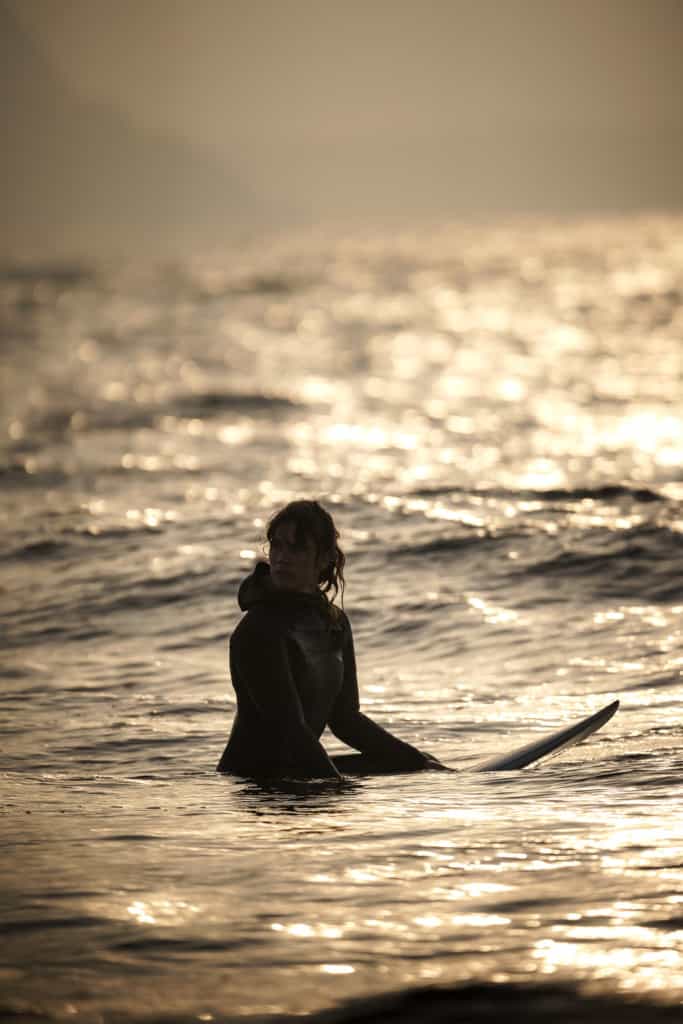
From the huge database of historical angling records, to the unpublished results of the mortality study, and the elusive catalyst behind the JNCC submission, it feels like there has been a breakdown of communication at a time when transparency and clarity are crucial. If a blanket ban on recreational catch-and-release shark fishing is implemented for certain species, it may help to protect some individuals in our waters, but how can scientists monitor how these shark populations are reacting to other threats such as climate change? Without a baseline for comparison, how will we know if new policy efforts are working? Furthermore, until we have located and proven where a potential pupping ground is, it can’t be protected effectively. Without trust, will we ever be able to fully collaborate and reap the benefits of complementary skill sets that people can bring to the table?
As intimidating waves smashed over the rugged, anthracite grey rocks around me, I felt the urgency of the climate crises and the worrisome state of our pilfered oceans rising. Some words from Gonzalo came back to mind: “Everybody is a little bit right and a little bit wrong.” The truth of the matter is clear; there really is no room for science for the sake of science, fishing for the sake of fishing and policy for the sake of policy anymore. Collaboration can’t be seen as an option; it must be a given. Perhaps the old saying is wrong, at least in this case; maybe it’s “tight lips” that “sink ships.”
Related Stories

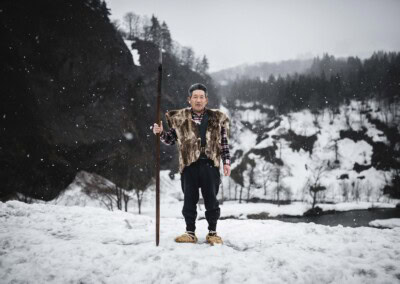
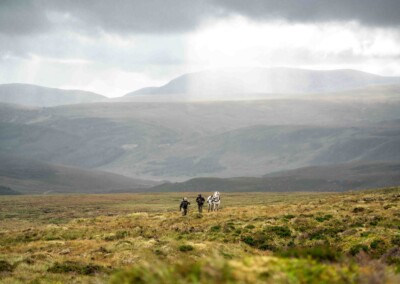
Latest Stories
